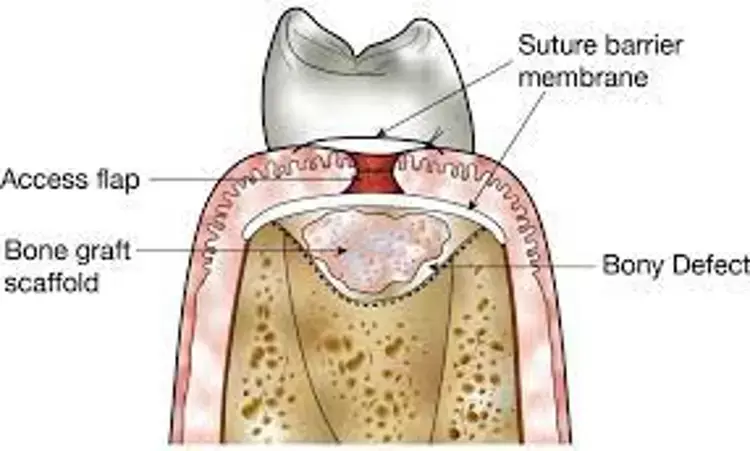- Home
- Medical news & Guidelines
- Anesthesiology
- Cardiology and CTVS
- Critical Care
- Dentistry
- Dermatology
- Diabetes and Endocrinology
- ENT
- Gastroenterology
- Medicine
- Nephrology
- Neurology
- Obstretics-Gynaecology
- Oncology
- Ophthalmology
- Orthopaedics
- Pediatrics-Neonatology
- Psychiatry
- Pulmonology
- Radiology
- Surgery
- Urology
- Laboratory Medicine
- Diet
- Nursing
- Paramedical
- Physiotherapy
- Health news
- Fact Check
- Bone Health Fact Check
- Brain Health Fact Check
- Cancer Related Fact Check
- Child Care Fact Check
- Dental and oral health fact check
- Diabetes and metabolic health fact check
- Diet and Nutrition Fact Check
- Eye and ENT Care Fact Check
- Fitness fact check
- Gut health fact check
- Heart health fact check
- Kidney health fact check
- Medical education fact check
- Men's health fact check
- Respiratory fact check
- Skin and hair care fact check
- Vaccine and Immunization fact check
- Women's health fact check
- AYUSH
- State News
- Andaman and Nicobar Islands
- Andhra Pradesh
- Arunachal Pradesh
- Assam
- Bihar
- Chandigarh
- Chattisgarh
- Dadra and Nagar Haveli
- Daman and Diu
- Delhi
- Goa
- Gujarat
- Haryana
- Himachal Pradesh
- Jammu & Kashmir
- Jharkhand
- Karnataka
- Kerala
- Ladakh
- Lakshadweep
- Madhya Pradesh
- Maharashtra
- Manipur
- Meghalaya
- Mizoram
- Nagaland
- Odisha
- Puducherry
- Punjab
- Rajasthan
- Sikkim
- Tamil Nadu
- Telangana
- Tripura
- Uttar Pradesh
- Uttrakhand
- West Bengal
- Medical Education
- Industry
Bone Grafts and Substitutes in Dentistry: an emerging trend

Tissue engineering hybrid constructions with enhanced bone regeneration ability are emerging areas of development, suggests a study published in the Molecules.
After tooth loss, bone resorption is irreversible, leaving the area without the adequate bone volume for successful implant treatment. Bone grafting is the only solution to reverse dental bone loss and is a well-accepted procedure required in one in every four dental implants. A dental bone graft adds volume and density to your jaw in areas where bone loss has occurred. The bone graft material may be taken from your own body (autogenous), or it may be purchased from a human tissue bank (allograft) or an animal tissue bank (xenograft).
Research and development in materials, design and fabrication technologies have expanded over the years to achieve successful and long-lasting dental implants for tooth substitution.
If gum disease has damaged the bone surrounding your tooth root, your dentist might have to replace it with a graft. The bone graft can be made from small parts of your own bone, a synthetic bone, or donated bone. This procedure helps prevent tooth loss and may help promote natural bone regrowth.
This review critically presents the various dental bone graft and substitute materials that have been used to achieve a successful dental implant. The article also reviews the properties of dental bone grafts and various dental bone substitutes that have been studied or are currently available commercially. The various classifications of bone grafts and substitutes, including natural and synthetic materials, are critically presented, and available commercial products in each category are discussed. Different bone substitute materials, including metals, ceramics, polymers, or their combinations, and their chemical, physical, and biocompatibility properties are explored.
Thus, the researchers concluded that tissue engineering hybrid constructions with enhanced bone regeneration ability, such as cell-based or growth factor-based bone substitutes, are discussed as an emerging area of development.
Reference:
Bone Grafts and Substitutes in Dentistry: A Review of Current Trends and Developments by Rusin Zhao published in the Molecules
Dr. Shravani Dali has completed her BDS from Pravara institute of medical sciences, loni. Following which she extensively worked in the healthcare sector for 2+ years. She has been actively involved in writing blogs in field of health and wellness. Currently she is pursuing her Masters of public health-health administration from Tata institute of social sciences. She can be contacted at editorial@medicaldialogues.in.
Dr Kamal Kant Kohli-MBBS, DTCD- a chest specialist with more than 30 years of practice and a flair for writing clinical articles, Dr Kamal Kant Kohli joined Medical Dialogues as a Chief Editor of Medical News. Besides writing articles, as an editor, he proofreads and verifies all the medical content published on Medical Dialogues including those coming from journals, studies,medical conferences,guidelines etc. Email: drkohli@medicaldialogues.in. Contact no. 011-43720751


